Introduction
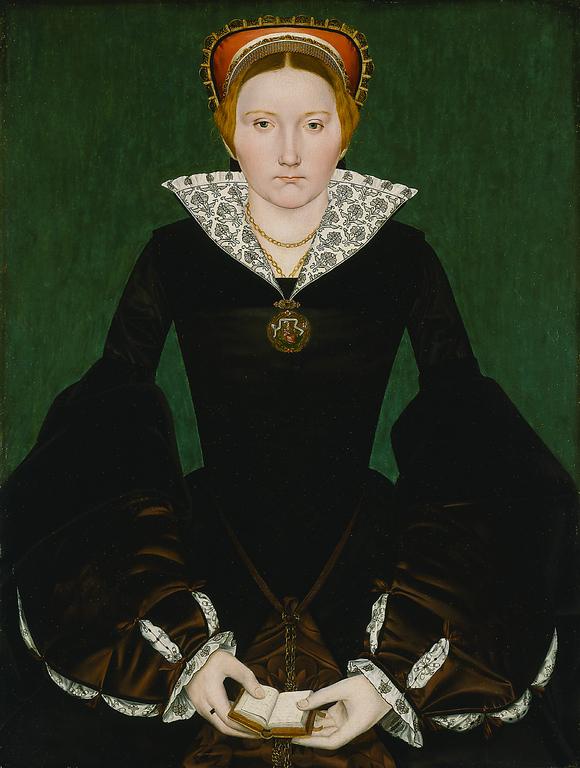
- Image: Northern Renaissance
- Artist: Unknown
- Crestor: School of Hans Holbein, European; British; English (painter)
- Title: Portrait of a Young Woman
- Work Type: Painting
- Date: about 1540 – 1545
- Repository L: The Minneapolis Institute of Arts
The purpose of this research paper is to assess the garments worn in the portrait using the OREO (Opinion, Reasons, Examples and Opinion) Method. It includes descriptions of the main garments, relevant background information (social setting and historical context) and aesthetic significance.
Opinion
The woman in this portrait holds an important social status in society and most likely a member of the wealthy class, English court or royal family. The French hood on the woman’s head could depict her high social status in society (Minneapolis Institute of Arts 2014). In addition, the upper part of the woman’s garment consists of highly structured gold brooch. The brooch is ornamented to depict an image of a seated woman playing an instrument that is similar to a lute. The garment also has what appears to be white roll with a message of ‘Praise the Lord forever more’. Brooches during the Northern Renaissance were particularly common among the royal and upper class families. The woman also holds a small prayer book with a gold casing. The ornament on the sitter’s neck is made of gold. Perhaps during this period, only wealthy families could afford such expensive garments and girdle books. In addition, they could also hire artists to paint their portraits. Such portraits with expensive garments and prayer books reflected high social status and wealth.
Reasons
During the 1500s, many Northern artists were being hired by upper class families to paint their pictures and portraits. The clothing during the Northern Renaissance played significant roles in depicting social standing in society. One could simply observe clothing and clearly identify nobility, royal families or peasants. It is considered that cloths and jewelleries during the Northern Renaissance were such fundamental treasure that individuals in nobility or aristocracy would acquire highly decorated expensive outfits. Specifically, women wore finely adorned cloths.
Northern Renaissance fashion and costumes reflected the thriving status of humanity as gems and clothing materials became readily available.
Aristocrats and nobility adorned themselves in highly sophisticated and bright garments. Expensive materials were mainly for the upper class and in some locations, the masses were forbidden to have them. As the Portrait of a Young Woman shows, embroidery of gold or any other expensive gems were sewn to create beautiful designs that depicts religious scenes or messages. Others could be sewn to depict nature and legendary elements. People who lived during the Renaissance period considered such expensive garments to match their social status.
The Portrait of a Young Woman shows that fashion was extremely important for status symbol in this period. The noble and aristocrats literary displayed their wealth through costumes. These garments helped in establishing their status and power in society. Hence, one can conclude that aristocracy and royal families were responsible for driving fashion during the Northern Renaissance. While commoners were responsible for some fashion trends like ‘slashing’ and beret, these were hardly noticed. The upper class gained recognition because they could afford gems to decorate their garments.
The colour used in the portrait is equally relevant. Initially, dark colours were reserved for commoners. Later, however, as gems became available, the wealthy noted that dark colours could help better in portraying their jewels. Hence, in the Portrait of a Young Woman¸ the sitter is in a dark garment. The dark colour helps in elaborating the quality of the garments, ornaments and therefore establishes the reputation of the sitter as a wealthy aristocrat.
Dark clothes during Northern Renaissance became associated with nobility and the rich as a symbol of refinement and distinction.
Examples
There are some similar cases noted during the Northern Renaissance that could support elements observed in the Portrait of a Young Woman. Jewels used during the Renaissance period had common attributes for splendour. Enamels on jewels were highly structured in arrangement and colourful in design. They covered the jewels with inscriptions, which were possible because of developments in cutting technologies of gems. In the Portrait of a Young Woman, the inscriptions reflected a religion theme of prayers. The everyday life reflected aspects of religion during Northern Renaissance. In addition, jewels were often inscribed with different messages to reflect political mighty of the kingdom. The jewel in figure 1 also depicts some forms on inscription. These inscriptions confirm the period of 1500 c.
In addition, jewels had different designs to show interests in the contemporary society. Different figures and scenes became common and they were therefore depicted on jewelleries. The Northern Renaissance led to increased art of engraving gems to reflect new cultures, individuality and self-awareness (Victoria and Albert Museum n.d).
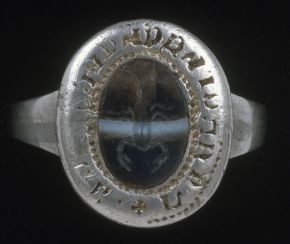
Another example that can help us understand the Portrait of a Young Woman is Jane Seymour, Henry VIII’s third wife (figure 2). The portrait was done in 1520s. It offers a glimpse of life and fashion interests within nobility and wealthy families. Jane Seymour wears headdress while the sitter in the Portrait of a Young Woman also wears French headdress. Although the dresses are different in the designs of the neck, they are all bulky. During this period, women nobility tended to adorn long gold chains on the bodice of their garments to match their necklaces. In a similar manner to the Portrait of a Young Woman, Jane Seymour wears a set of matching jewellery.
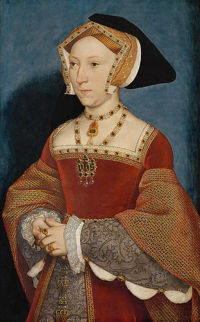
Further, noble women continued to wear elegant parure as depicted by portraits of 1530s. Ladies continued to wear coif with uncommon pendant attached to them. The coifs were jewelled in the Northern Renaissance fashion (Antique Jewelry University n.d). The necklaces were crafted from gems to match dresses and reinforce authority and nobility. In a similar fashion to the Portrait of a Young Woman, Jane Seymour also wears gold chain with ornamented links, which run around her neck twice while others can be noted hanging around their waists.
Fashion changes over time. Consequently, the square low cut collar paved the way for the new high-collared dress of the Portrait of a Young Woman and the one adorned by Elizabeth (figure 3). Both women wear dark high-collared dresses, elegant in design and affixed with elements of gold jewelleries.
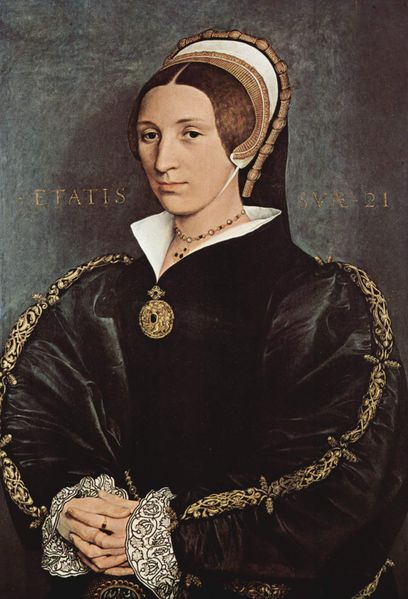
The key to interpreting and comprehending the Northern Renaissance fashion lies in the details noted in portraits. In this case, the gold encased Bible is critical in the Portrait of a Young Woman and in the portrait of Elizabeth (figure 4). The Bible was associated with the rich and royalty and Northern painters attempted to depict such lifestyles in their works. Both the sitter and Elizabeth have small gold encased Bibles. A critical view shows that the Bible became more worldly and associated with wealth and clothing of the noble and upper class. The artists focused on realistic detail about the Northern Renaissance and the Bible became subordinated to such significant events in display of garments.
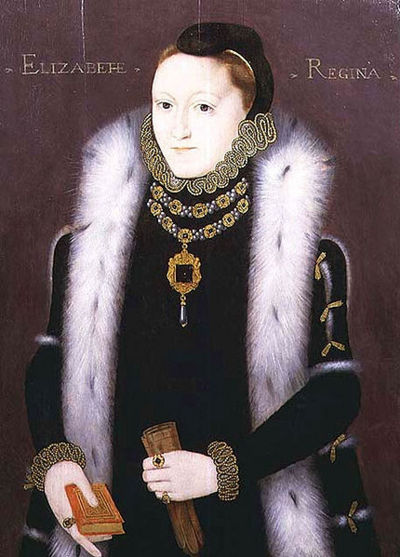
In the Northern Renaissance, women were fond of their costumes adorned with heavy expensive jewelleries. They became highly elaborate with high-collared dresses.
These examples attempts assess costumes and fashion, and link them with the Portrait of a Young Woman to reflect common practices during the Northern Renaissance. Moreover, one must note that fashion and costumes, apart from personal display of affluence, had greater political significance in the courts. These portraits and others not included in this research have shown that nobility and aristocracies had to keep high standards of fashion favoured in courts and some were discreet and sombre (Jones and Stallybrass 2000).
The period marked in the Northern Renaissance shows how art and fashion changed. Artists no longer concentrated on inspirations from the past. Instead, nobles and wealthy people commissioned them to do their portraits. Artists continued to develop their skills and talents. Therefore, they did not adopt the classical techniques of imitating sculptures, but concentrated on important elements of everyday life among the nobles.
In fashion and costumes, jewellery became extremely important. While there were few surviving cameos, they hardly became fashionable elements during the Middle Ages and Renaissance period. These were filigree, including gold jewellery and artists did not concentrate on reviving them. However, the Biblical influences and themes were common during these periods as reflected in the Portrait of a Young Woman and the painting of Elizabeth. In addition, the Bible became an important element in depiction of fashion and jewellery. Therefore, jewellery became prominent in the Northern Renaissance and replaced elements of art from the Middle Ages and Gothic periods.
Northern Renaissance was characterised by a new style of art – painting of portraits. Through these paintings, jewellery influenced several aspects of arts (Antique Jewelry University n.d). Artists had to perfect their skills in goldsmith workshops in order to capture elaborate, accurate and clarity of the noble fashion and costumes. Artists and goldsmiths must have worked closely to achieve perfect designs for the nobles. These portraits allow us to form and understand exceptional insights of fashion, costumes and jewelleries during the Northern Renaissance.
The nobility and upper class considered jewelleries as pawned items. These items had several descriptions. Therefore, researchers who wish to explore fashion and costumes during the Northern Renaissance have often considered jewelleries for information. The available pieces of portraits highlight extraordinary artistry but, as noted, paintings and designs offered greater insights in the full splendour of the nobility and upper class lifestyles during the Northern Renaissance. One cannot fail to appreciate the role of goldsmiths in shaping fashion and costumes during this period. The techniques identified in these portraits show high-levels of specialisation in fashion and design. As a result, fashion theory in the Renaissance period was defined by popular cultures of the nobility, in which different specialised groups had various roles in designing, shaping, engraving and coating gemstones to define their social status (Atherton and Sanders 2013).
An article by Jane Stevenson captures women interests in fashion and costume as “expensive tastes in clothes and jewels and loved elaborate masques, which added a good deal to the costs of the court and … Textiles and fashion were central to court life” (Stevenson 2011, sec 2). Luxury was the popular fashion theme during this period and gold jewelleries defined it among the nobility. In fact, dress jewels adorned with gold and other gems emerged among the nobility during the Northern Renaissance. The nobility realised that they could adorn nearly every object, including the Bible.
Conclusion
Fashion and textile during the Northern Renaissance were of significance to nobility and upper class. They attracted huge resources and available gems, and artists had to capture these display of wealth when commissioned by their masters. It is therefore important to note the importance of costume during this period. These are elements, which must be understood in order to comprehend fashion theory and popular cultures at a given period in history. At the very least, fashion and costumes of the noble were phenomena in their own rights. Nevertheless, elements of fashion were the most noticeable and readily available for personal display of wealth, class, taste and social status.
These costumes were associated with spiralling costs and importance attached to jewelleries and luxurious fabrics. In fact, they marked an increased splendour during the Northern Renaissance period and only people of affluence could afford them.
This research paper has assessed the garment of the Portrait of a Young Woman to contribute to understanding of fashion and costumes of 1500 within the wider context of nobility and aristocracies of Europe.
Reference
Antique Jewelry University. Renaissance Jewelry. n.d. 2014. Web.
Atherton, Ian, and Julie Sanders (eds). The 1630s: Interdisciplinary Essays on Culture and Politics in the Caroline Era. Manchester: Manchester University Press, 2013.
Jones, Ann, and Peter Stallybrass. Renaissance Clothing and the Materials of Memory. Cambridge: Cambridge University Press, 2000.
Minneapolis Institute of Arts. Portrait of a Noblewoman. 2014. Web.
Stevenson, Jane. “Texts and Textiles: Self-Presentation among the Elite in Renaissance England.” Journal of the Northern Renaissance, no. 3. 2011. Web.
Victoria and Albert Museum. A History of Jewellery. n.d. 2014. Web.